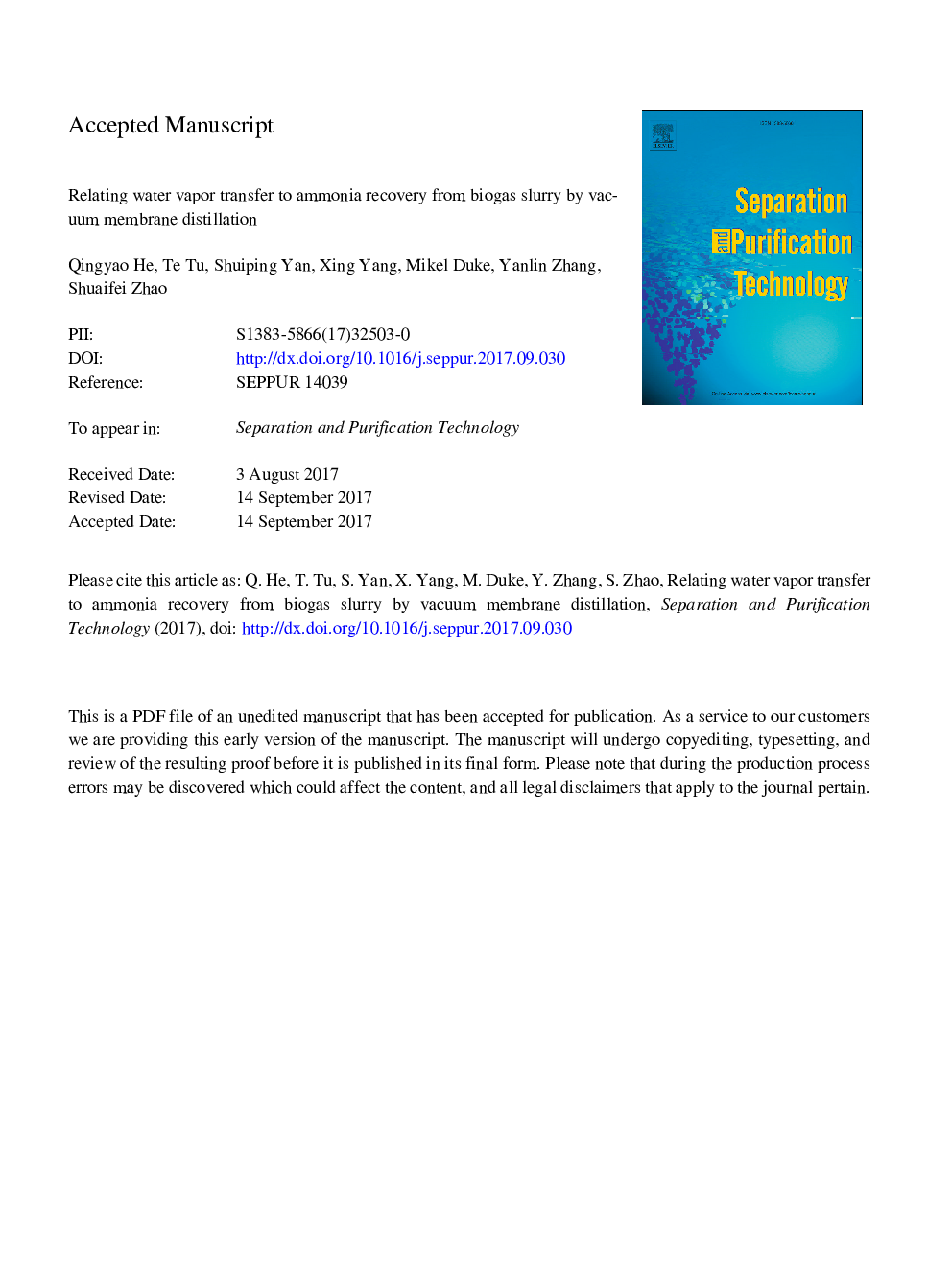| Article ID | Journal | Published Year | Pages | File Type |
|---|---|---|---|---|
| 4989518 | Separation and Purification Technology | 2018 | 41 Pages |
Abstract
As the byproduct of biogas production, biogas slurry with high content of ammonia nitrogen may cause serious environmental problems (e.g. eutrophication). Ammonia recovery from biogas slurry is of great importance in minimizing the environmental impacts and maximizing the benefits. This study explores the role of water vapor transfer in ammonia recovery from biogas slurry by vacuum membrane distillation. The overall mass transfer coefficients, ammonia separation factors and ammonia fluxes are used to evaluate ammonia separation performance. Effects of various operating parameters including the feed temperature, flow rate, initial pH of biogas slurry and vacuum pressure on ammonia separation performance are investigated and discussed. Ammonia separation performance is dominated by the initial pH of biogas slurry. Optimizing operational parameters can effectively increase the overall mass transfer coefficient, but does not necessarily improve the ammonia separation factor. Water flux has an important impact on the overall ammonia transfer coefficient. An interesting S curve logistic model can well fit the relationship between the water flux and the overall ammonia transfer coefficient, suggesting that there is an optimal water flux. A relatively high concentration aqueous ammonia (up to 1.0 mol-N/L, much higher than the value in feed biogas slurry < 0.2 mol-N/L) can be recovered on the permeate side, with more than 98% of the nitrogen element in the form of free ammonia. The recovered aqueous ammonia can be used for acid gases scrubbing (e.g. carbon capture).
Keywords
Related Topics
Physical Sciences and Engineering
Chemical Engineering
Filtration and Separation
Authors
Qingyao He, Te Tu, Shuiping Yan, Xing Yang, Mikel Duke, Yanlin Zhang, Shuaifei Zhao,
